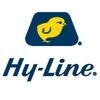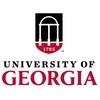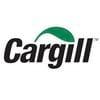Explore all the information on
Poultry nutrition - Other additives
Alternative feed additives have promising importance in broiler production due to the ban on the use of certain antibiotics. The most used antibiotic alternatives in broiler production are phytogenics, organic acids, prebiotics, probiotics, enzymes, and their derivatives. Antibiotic alternatives have been reported to increase feed intake, stimulate digestion, improve feed efficiency, increase growth performance, and reduce the incidence of diseases by modulating the intestinal microbiota and immune system, inhibiting pathogens, and improving intestinal integrity. Simply, the gut microbiota is the target to raise the health benefits and growth-promoting effects of feed additives on broilers. Therefore, naturally available feed additives are promising antibiotic alternatives for broilers.
Introduction Fat is an essential component in broiler feed, serving as a highly concentrated energy source and playing a crucial role in growth performance, feed efficiency, and meat quality. Selecting the right fat source is critical to balancing cost-effectiveness, energy value, and essential fatty acid (EFA) requirements. In this article, we will compare Beef Tallow, Soya Crude Oil, and Rice Bran Crude Oil as fat sources in broiler diets, analyze their cost and nutritional...
Comments : 0
Recommendations: 0
Struggling with feed pellets breaking apart in water? Dealing with excessive dust in poultry, swine, or cattle feed? Magicoh Pellet Binder strengthens pellets, improves water stability, and enhances feed quality. Hear what Mr. Ronnick Fong (Hangzhou De Mark) has to say about it...
Comments : 0
Recommendations: 2


Alternative procedure for determining lysine maintenance requirement in poultry
Suggested link
Struggling with feed pellets breaking apart in water? Dealing with excessive dust in poultry, swine, or cattle feed? Magicoh Pellet Binder strengthens pellets, improves water stability, and enhances feed quality. Hear what Mr. Ronnick Fong (Hangzhou De Mark) has to say about it...
Comments : 0
Recommendations: 0
I. INTRODUCTION Dietary electrolyte balance (DEB) is defined by the interrelationship between sodium (Na + ), potassium (K + ) and chloride (Cl - ) where DEB = Na ++ K + -Cl - as mEq/kg and it plays an influential role in homeostasis of the body fluids. Borges et al. (2004) investigated DEB in two experiments and concluded that there was a quadratic effect on weight gain and feed conversion efficiency (FCE) when the DEB was...
Comments : 7
Recommendations: 5
.jpg&w=3840&q=75)

(Mandarin) Strengthening Pellets for Better Feed Performance
Suggested link
INTRODUCTION Cereal grains and vegetable protein sources contain between 10-75% of non-starch polysaccharides (NSP). NSP in cereals form part of the cell wall structure and in vegetable proteins, such as legumes, may also play a role as an energy storage material. As far as monogastric animal nutrition is concerned, NSP as the major part of fibre (fibre is the sum of NSP and lignin) are regarded as feed components that...
Comments : 19
Recommendations: 1
Al Zimmerman, CEO of Axitan, discusses how their groundbreaking endolysin technology is transforming antibiotic-free production. He shares insights on productivity gains, cost savings, and the company's exciting plans for 2025, including new partnerships and product expansions....
Comments : 3
Recommendations: 3
Ricky Thaper (Poultry Federation of India) explains how increases in feed costs and restrictions on imported GM-modified soybean meal and corn affect India's poultry industry in this Engormix interview during IPPE 2025 in Atlanta, USA....
Comments : 1
Recommendations: 1
Craig Coufal (Jones-Hamilton) shares research on the benefits of sodium bisulfate in performance and gut health, in this Engormix interview during IPPE 2025 in Atlanta, USA
...
Comments : 0
Recommendations: 1


Feed Granulometry and the Importance of Feed Particle Size in Layers
Suggested link
Maria Fernandez Cuadrado (University of Arkansas) speaks about her research Impact of heat stress on hepatic lipogenesis in broilers: a comparison of low- and high-water efficient lines, presented at the IPSF 2025...
Comments : 0
Recommendations: 0
Mike Persia (Virginia Tech) explains his research on the use of emulsifiers to improve feeding efficiency and its impact on performance, egg quality, and abdominal fat pads in this Engormix interview during IPPE 2025 in Atlanta, USA....
Comments : 0
Recommendations: 0
.jpg&w=3840&q=75)

Introducing Afla-V ONE: Safe, Sustainable Aflatoxin Detection for Complete Feeds and Pet Foods
Suggested link
In this Engormix interview during IPPE 2025 in Atlanta, USA, Chongxiao (Sean) Chen (University of Georgia) offers information on resources provided by his UGA Poultry Science group: a Poultry Nutrition 101 Course and a newsletter....
Comments : 0
Recommendations: 0
Hello. My name is Edmore Bumhira, a student at Chinhoyi University of Technology in Zimbabwe. I am doing a MPhil in Animal nutrition. Here in Zimbabwe we are still backwards in terms of methods used to formulate animal feeds. Are there easier modern methods of formulating broiler feeds? May you share them with me? ...
Comments : 1
Recommendations: 0
Modern poultry production allowed to increase the productivity at the farm level. As a consequence, a higher susceptibility of the birds to different bacterial or viral diseases in the poultry houses due to changing conditions like the concentration of the birds, multi-age sites, increased genetic potential but more fragile birds. Biosecurity and farm management are the basics to limit the effects of this higher susceptibility....
Comments : 15
Recommendations: 9
Some breeder flocks have higher egg peak production, 92%, whereas other breeder flocks reach 82% at egg peak. On the other hand, some broiler breeders lay a good peak egg production, but as hens age, egg production descends more than expected. In this situation, how can we increase the persistence of egg production in broiler breeders? Breeder managers should evaluate the following four points for improving the persistence of egg production: (a) body weight uniformity and peak egg...
Comments : 5
Recommendations: 3
Optimizing Fat Incorporation in Broiler Feed A Cost-Effective and Nutritional Perspective Author: A.Ashraf Ali Introduction Fat is an essential component in broiler feed, serving as a highly concentrated energy source and playing a crucial role in growth performance, feed efficiency, and meat quality. Selecting the right fat source is critical to balancing cost-effectiveness, energy value, and essential fatty acid (EFA) requirements. In this article,...
Comments : 0
Recommendations: 0
1. Introduction The current global challenge of achieving food security and ensuring access to sufficient, nutritious, and safe food for all while maintaining or improving agricultural sustainability has been presented in the United Nations’ Sustainable Development Goals (SDGs), particularly Goal 2, which refers to Zero Hunger. This goal emphasizes the necessity to end hunger while achieving food security through improved nutrition and promote sustainable agricultural practices...
Comments : 0
Recommendations: 0
Dr. Alain Riggi from Phileo by Lesaffre points out some trials on how Actisaf Sc 47 HR+ delivers positive effects on poultry production...
Comments : 2
Recommendations: 2
Annie Kneedler (Chief of Party – USAID TRANSFORM at Cargill) comments on the TRANSFORM project activities and how to improve animal health through global collaboration, in this Engormix interview....
Comments : 1
Recommendations: 2


Alternative procedure for determining lysine maintenance requirement in poultry
Suggested link
Nils Niedner (Evonik Animal Nutrition) highlights how MetAMINO® Calculator and AMINONIR® help stakeholders make smarter, data-driven decisions in feed formulation. With rapid, precise analysis of raw materials and finished feed, these tools ensure optimal nutrition and cost efficiency....
Comments : 0
Recommendations: 1
Paulo Teixeira, Vice President for Animal Nutrition in the Americas at Evonik, introduces a provocative campaign designed to spark awareness and action on sustainability. With Evonik’s deep expertise in nutrition and animal production, the campaign challenges the industry to rethink crude protein use, reduce nitrogen emissions, and drive more sustainable operations. ...
Comments : 0
Recommendations: 1






.jpg&w=3840&q=75)

























